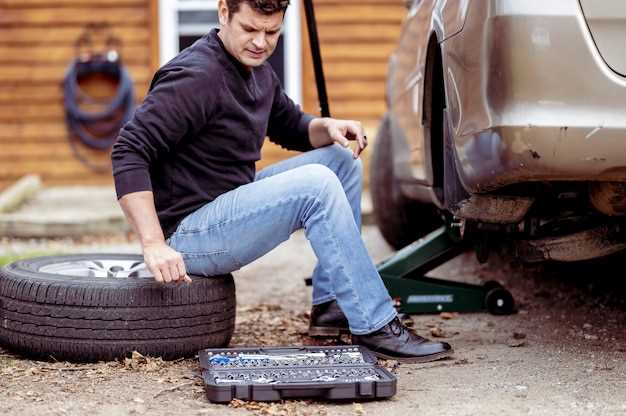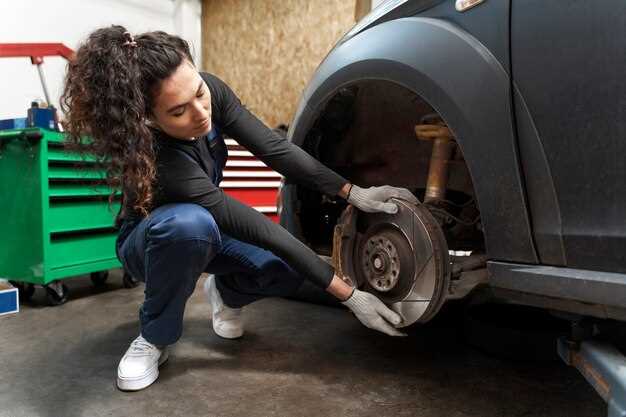
Dealing with Audi Suspension Problems

When it comes to maintaining the performance and comfort of your Audi, the suspension system plays a crucial role. A well-functioning suspension not only ensures a smooth ride but also enhances vehicle handling and safety. However, over time, components can wear down, leading to a range of issues that require immediate attention. Understanding common suspension problems and how to address them is essential for any Audi owner looking to keep their vehicle in top condition.
In this article, we will explore typical symptoms of suspension problems in Audi vehicles, as well as provide practical repair tips and solutions. From diagnosing odd noises to assessing ride height discrepancies, we will guide you through the troubleshooting process. Whether you are a seasoned mechanic or a DIY enthusiast, having the right information at your fingertips will empower you to make informed decisions about your vehicle’s suspension system.
Additionally, we will highlight some of the most effective repair techniques and what to consider when seeking professional help. Audi is known for its engineering excellence, and with the right approach to suspension issues, you can ensure your vehicle remains a pleasure to drive. Let’s dive into the essential troubleshooting tips and solutions that every Audi owner should know.
Identifying Common Audi Suspension Problems

The suspension system in an Audi vehicle plays a critical role in maintaining comfort and handling. Recognizing common suspension issues early can help prevent more serious problems down the line. Here are key indicators of potential suspension trouble.
One of the most noticeable signs of suspension issues is uneven tire wear. If you observe that your tires are wearing out more on one side, it may indicate misalignment or worn-out suspension components. Regularly inspecting tire condition can provide valuable insight into suspension health.
Another common problem is excessive bouncing or swaying while driving. If your Audi feels unsteady, especially on uneven surfaces, this may point to worn shock absorbers or struts. A quick test is to push down on the front or rear of the vehicle and release; if it bounces more than twice, the shocks may need replacement.
Noises during driving can also signal suspension trouble. Clunking, grinding, or knocking sounds when hitting bumps or turns can indicate worn bushings, ball joints, or other suspension components. Pay attention to any unusual sounds when operating the vehicle, as they can help pinpoint the source of the issue.
Lastly, a drop in ride height on one side of the vehicle can suggest a problem with the air suspension system or a broken spring. If you notice that your Audi sits lower than usual on one side, it is crucial to have it checked immediately to avoid further damage.
By identifying these common suspension problems early, Audi owners can address issues proactively, ensuring a better driving experience and prolonging the life of their vehicle.
Step-by-Step Guide for Audi Suspension Repairs

Repairing the suspension system of your Audi is crucial for maintaining optimal performance and safety. Follow these steps carefully to ensure a successful repair process.
Step 1: Diagnose the Issue
Start by identifying the symptoms of the suspension problem. Common signs include uneven tire wear, excessive noise, or a bumpy ride. Use a diagnostic tool to read trouble codes from the vehicle’s computer if necessary.
Step 2: Gather Necessary Tools and Parts
Collect the tools required for the repair, including a jack, jack stands, wrenches, and a torque wrench. Ensure you have the correct replacement parts for your specific Audi model, such as struts, shocks, bushings, or springs.
Step 3: Safety First
Before starting the repair, ensure the car is on a flat surface. Use the jack to lift the vehicle and secure it with jack stands. Never work under a vehicle supported only by a jack.
Step 4: Remove the Wheel
Take off the wheel corresponding to the suspension component you are repairing. This will provide better access to the suspension parts that need attention.
Step 5: Inspect the Suspension Components
Thoroughly check the suspension parts for wear and damage. Look for leaks in the shocks or struts, cracked rubber bushings, or broken springs. Document any issues found for reference.
Step 6: Replace the Damaged Components
Carefully remove the faulty components using appropriate tools. Install the new parts in the reverse order, ensuring they are properly aligned and secured to manufacturer specifications.
Step 7: Reassemble and Recheck
Once the repairs are made, reattach the wheel and lower the vehicle. Check the torque settings on all hardware to ensure safety and reliability.
Step 8: Perform a Test Drive
Conduct a test drive to verify that the suspension repair has resolved the issues. Pay attention to how the vehicle handles and listen for any unusual sounds that may indicate lingering problems.
Step 9: Regular Maintenance
After completing the repair, consider scheduling regular inspections of your Audi’s suspension system to prevent future issues. Keeping up with maintenance can extend the life of your suspension components.
Maintenance Tips to Prevent Suspension Issues in Audi Vehicles
Regular maintenance is essential to ensure the longevity and optimal performance of your Audi’s suspension system. Here are some key tips to help you prevent suspension issues.
1. Regular Inspections: Schedule periodic inspections of your suspension components. Look for signs of wear such as leaking shock absorbers, worn bushings, or damaged springs. Early detection can prevent costly repairs in the future.
2. Check Alignment: Misalignment can lead to uneven tire wear and put excessive strain on suspension components. Have your wheel alignment checked at least once a year or whenever you notice changes in handling.
3. Monitor Tire Pressure: Proper tire pressure is crucial for even weight distribution and handling. Check your tire pressure regularly and adhere to the manufacturer’s specifications to avoid added stress on the suspension system.
4. Replace Worn Components: Do not ignore signs of wear. Replace components like shock absorbers and struts as per the manufacturer’s recommendations. Worn parts can significantly affect the handling and safety of your Audi.
5. Avoid Overloading: Overloading your vehicle can place undue stress on the suspension system. Always adhere to your Audi’s load specifications to maintain proper handling and performance.
6. Drive Smoothly: Avoid potholes, speed bumps, and rough terrain when possible. Harsh driving conditions can accelerate wear on suspension components. Practice smooth acceleration and braking to minimize stress.
7. Wash Underneath Regularly: Road salt and debris can cause corrosion on suspension parts. Regularly washing the undercarriage of your Audi can help prevent rust and extend the life of your suspension components.
By following these maintenance tips, you can significantly reduce the chances of suspension issues and ensure a smooth and safe driving experience in your Audi. Regular care and attention can save you both time and money on repairs down the line.